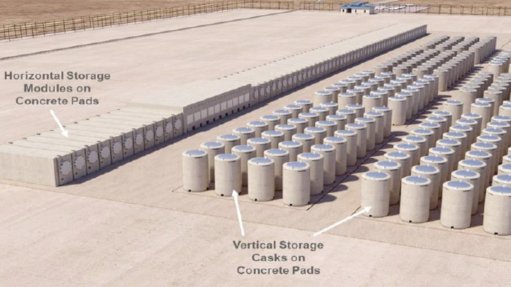Paragon Finance Warns: Crushing Municipal Rate Hikes Threaten Commercial Property ROI
This article has been supplied and will be available for a limited time only on this website.
South African property owners face a complex landscape of rising rates and taxes, alongside evolving market dynamics and strategic shifts across sectors. Understanding these factors is crucial for investors, homeowners, and lenders alike.
In Johannesburg, property rates and taxes have outpaced both property price growth and CPI inflation over the past five years, increasing the real cost pressure on residential and commercial property owners. In contrast, Durban’s are in line with inflation while Cape Town’s rate increases, although minimal until now, are set to skyrocket with both rates and fixed charges being linked to property values. This means the actual municipal tax burden relative to inflation and property value growth varies significantly by city, with Johannesburg property owners facing the greatest squeeze.
According to Stats SA, property rates recorded an average annual growth rate of 6.8% from 2009 to 2024 across 39 municipalities, more than doubling in the last 15 years, with inflation increasing by an average of 5.1% per year over the same period. Residents in some municipalities have been harder hit than others, with some facing massive increases in values, and in turn, property rate hikes due to discrepancies and questionable valuations.
“Understanding how property rates and taxes have changed relative to South Africa’s Consumer Price Index (CPI) inflation provides key insights into the real burden on property owners in the country’s major metros,” explains Gary Palmer, Founder and CEO of Paragon Finance.
Property rates for Johannesburg and Durban municipalities are currently based on a statutory calculation known as the cent-in-rand tariff (the rate a person would pay for each rand of property worth is indicated by the formula) applied to the market value of the property, without a separate fixed charge component.
Cape Town, in contrast, has adopted fixed charges tied to property values as part of its rates and taxes structure, meaning that property owners will pay a fixed monthly or annual fee based on the value of their property, in addition to the cent-in-the-Rand tariff. While this approach aims to make
the rates system more equitable and transparent, it has been particularly controversial due to the increased burden on higher-valued properties.
Delving deeper into the aggregate finances of municipalities across South Africa, research from the South Africa Property Owners Association (SAPOA) shows it’s clear that property rates are fulfilling an increasingly important role in supporting municipal revenue, being used to subsidise other declining sources of income for municipalities. Some of the key drivers behind these above-inflation increases include maintaining and replacing aging infrastructure, a declining revenue base due to poor collection rates, mismanagement of municipality budgets, property valuation hikes leading to compounded increases in charges, and urban migration, adding service pressure to the region without adequate funding being made available.
For property owners, this means a growing financial burden, especially as utility costs for water and electricity also continue to rise sharply. These escalating costs can lead to affordability gaps and arrears, which in turn risk higher vacancies and tenant churn if not managed proactively.
Rising property rates and taxes can reduce the market value of properties and increase the financial burden on borrowers.
“For example, a significant increase in property tax expenses can lower a property's net operating income (NOI), which directly diminishes its market value. This, in turn, affects the loan-to-value (LTV) ratios that lenders, like us at Paragon Finance, rely on to assess risk, potentially making existing loans riskier than initially anticipated,” explains Palmer.
Net operating income (NOI) volatility, a measure of how much the NOI of a real estate property fluctuates over time, helps Paragon Finance understand the stability and predictability of cash flows from the property, by quantifying the risk associated with the income-generating ability of the property.
Bridging finance plays a crucial role in property transactions, especially during the transfer process when sellers often need to settle outstanding municipal rates and taxes before the property can be registered in the buyer’s name. This is not only relevant when clients are in arrears; even those who are up to date with their payments may need to pay rates in advance to obtain the mandatory rates clearance certificate required for transfer.
How Bridging Finance Works During Transfer
When a property is sold, the seller is required to obtain a rates clearance certificate from the municipality, which certifies that all municipal charges (such as rates, taxes, and service fees) have been fully paid. Without this certificate, the transfer cannot proceed. However, sellers may not always have the liquidity to settle these amounts upfront, especially given the significant increases in municipal rates in recent years. This is where bridging finance becomes invaluable.
Palmer notes that “Bridging finance is a short-term solution that allows property sellers to access a portion of their expected proceeds before the transfer is registered. This funding can be used to pay outstanding rates and taxes, cover transfer costs, or even make a deposit on a new property. It’s not just for clients who are in arrears—anyone needing to settle rates before transfer can benefit from this facility. At Paragon Finance, we add value by paying these rates directly on behalf of our clients, ensuring that the transfer process is not delayed due to outstanding municipal charges.”
Section 118 and Opportunities for Rate Reductions
A key issue many property owners face is the accumulation of outstanding rates over time. Section 118 of the Municipal Systems Act requires that all municipal debts for the preceding two years be settled before transfer, but it also opens the door for clients to challenge and potentially reduce rates that have been outstanding for longer periods.
Palmer adds “We’re also seeing more clients take advantage of Section 118, which allows them to apply for reductions on rates that have been outstanding for an extended period. This can result in significant savings and helps facilitate the transfer process, especially in cases where the amounts owed are substantial.”
Paragon Finance distinguishes itself by proactively facilitating the settlement of rates on behalf of the clients before transfer. This service streamlines the transaction, reduces the risk of delays, and ensures compliance with municipal requirements.
“Our approach is about more than just lending—it’s about removing obstacles for our clients. By paying rates before transfer, we help them move forward with their property transactions without unnecessary delays, whether or not they’re in arrears. This is particularly valuable in today’s environment of rising municipal charges and complex transfer processes,” notes Palmer.
To mitigate risks and capitalise on opportunities, property stakeholders in the commercial sector are adopting certain strategies, such as repricing leases to include cost pass-throughs for rising municipal rates and utilities, exiting low-yield suburbs and office stock vulnerable to high levies and operational costs, investing in resilience measures such as generators as well as focusing on logistics and industrial properties that offer better returns and lower utility dependence.
“We’re seeing commercial office spaces challenged by high municipal costs and increasing operational expenses, prompting some owners to exit low-quality office stock whilst residential properties, particularly in lower to middle-income segments, face pressure from rising rates and utility costs, affecting affordability for tenants and homeowners,” notes Palmer.
“As a non-bank lender, we recognise the challenges posed by these municipal rate increases. Our approach focuses on providing flexible, tailored financing solutions that consider the unique circumstances of each client,” comments Palmer.
By understanding the specific impacts of municipal charges on property investments, the Paragon Finance team offers funding options that mitigate these challenges and support sustainable growth.
Comments
Press Office
Announcements
What's On
Subscribe to improve your user experience...
Option 1 (equivalent of R125 a month):
Receive a weekly copy of Creamer Media's Engineering News & Mining Weekly magazine
(print copy for those in South Africa and e-magazine for those outside of South Africa)
Receive daily email newsletters
Access to full search results
Access archive of magazine back copies
Access to Projects in Progress
Access to ONE Research Report of your choice in PDF format
Option 2 (equivalent of R375 a month):
All benefits from Option 1
PLUS
Access to Creamer Media's Research Channel Africa for ALL Research Reports, in PDF format, on various industrial and mining sectors
including Electricity; Water; Energy Transition; Hydrogen; Roads, Rail and Ports; Coal; Gold; Platinum; Battery Metals; etc.
Already a subscriber?
Forgotten your password?
Receive weekly copy of Creamer Media's Engineering News & Mining Weekly magazine (print copy for those in South Africa and e-magazine for those outside of South Africa)
➕
Recieve daily email newsletters
➕
Access to full search results
➕
Access archive of magazine back copies
➕
Access to Projects in Progress
➕
Access to ONE Research Report of your choice in PDF format
RESEARCH CHANNEL AFRICA
R4500 (equivalent of R375 a month)
SUBSCRIBEAll benefits from Option 1
➕
Access to Creamer Media's Research Channel Africa for ALL Research Reports on various industrial and mining sectors, in PDF format, including on:
Electricity
➕
Water
➕
Energy Transition
➕
Hydrogen
➕
Roads, Rail and Ports
➕
Coal
➕
Gold
➕
Platinum
➕
Battery Metals
➕
etc.
Receive all benefits from Option 1 or Option 2 delivered to numerous people at your company
➕
Multiple User names and Passwords for simultaneous log-ins
➕
Intranet integration access to all in your organisation

















